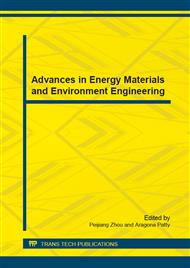p.181
p.185
p.189
p.193
p.197
p.205
p.211
p.216
p.220
Total Factor Energy Productivity and Efficiency in the Yangtze Delta Region: An Application of DEA-Malmquist Index
Abstract:
This paper used data envelopment analysis (DEA)-Malmquist index method to analyze the total factors energy productivity (TFEP) and efficiency of 16 cities in the Yangtze Delta region from the year 2008 to 2012. According to the computational results, the average TFEP of 16 cities during 1998-2012 is 0.978, and the average total factor energy efficiency (TFEE) is 1.011, while the average total factor energy technological change (TFTC) is 0.969. So the rapid drop of TFEP is mainly ascribable to the rapid drop of TFTC in the Yangtze Delta region. Specific to different cities and different period, there exists significant inequality catch-up effect and innovation effect in the Yangtze Delta region. In which, the catch-up effect of Nanjing, Suzhou, Yangzhou, Changzhou, Zhenjiang, Nantong, Taizhou1 and Jiaxing is evident, while the innovation effect of Shanghai, Nanjing, Suzhou, Wuxi and Zhoushan is more significant.
Info:
Periodical:
Pages:
197-201
Citation:
Online since:
December 2014
Authors:
Price:
Сopyright:
© 2015 Trans Tech Publications Ltd. All Rights Reserved
Share:
Citation:


